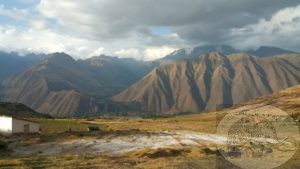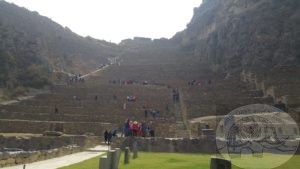Natural Beauty – Enjoy it while it lasts
There are some beautiful roads, or rather, there are roads that meander through some spectacular natural scenery, and the road from Cusco to Ollantaytambo is one of those. As the early morning sun rose slowly over the landscape, the mist cleared, and the distant mountain tops became the backdrop for beautiful vistas: farms and fields, rolling hills, the odd town, rivers with icy cold water meandering through the valleys on their way to distant cities and even more distant ocean. There are places on earth that put humans in their place – we are an infinitesimally small germ on the face of this planet, yet it’s most destructive cancer. We are not part of the natural food chain, or the planet’s natural order, we are instead an invasive species, an infectious virus, against which the planet’s immune system is reacting in ever increasingly violent ways. Unlike viruses we have the knowledge, and the capability, to adapt and preserve our host instead of killing it, yet we are either too caught up in our demands of ‘me, myself, my, I’, or frankly don’t give a ….. This laissez faire attitude, or the denial that anything is wrong, or the thought that “we’ll be long dead before it becomes a real problem” – are all, as the news proves daily, inexcusable.
A momentary rant
Why this rant on a Sunday morning? Perhaps it’s because I have in mind a few locations where I really did feel like a speck of dust in the grander scheme of things: the road from Cusco to Ollantaytambo; standing next to a giant Sequoia in Sequoia National Park in California’s Sierra Nevada mountains; the Great Rift Valley in Kenya and Lake Nakuru; Uluru in Australia…. I could keep going, but you get the idea. Note that these are all ‘natural’ places, not a single one man-made. Certainly there are places on the globe where I marveled at the ingenuity of humans – modern metropolises such as New York City, ancient ruins such as Sukhothai in Thailand or Borobudur in Indonesia, Ephesus in modern Turkey, or the delta works in the Netherlands that prevent a country of 17 million from being swallowed by the North Sea – but all these places are measured in hundreds or thousands of years, not in millions. As a species, we may rightfully be proud of what we have accomplished, but in the grander scheme of things, we are only a small blip when it comes to the heartbeat of the universe: at the same time we are either too proud, too stubborn, too concerned about acquiring the latest new gadget, or too stupid, to accept reality and to change our behaviour. (end of rant).
Ancient engineering accomplishments
Ollantaytambo is impressive. It’s as simple as that. Carved from and built into a mountain, the main temple and palace grounds overlook a valley and town that provided for the inhabitants all they needed. This site too, offers mysteries that remain to be solved, particularly how the huge stone blocks were carved miles away and brought to this location to build the town, the temple and the ruler’s palace. As in other Inca settlements, terraces used for agricultural purposes were built along the slopes of the mountains in the valleys of the Urubamba and Patakancha rivers along Ollantaytambo. Many such terraces were constructed using field stones, creating long, narrow strips of land where crops could be grown. In the case of some of the terraces at Ollantaytambo, more careful craftsmanship was employed to create terraces using cut stones instead of field stones. Some terraces are 700 meters long and 60 meters wide, with a difference of up to 15 meters between the levels of one terrace to another above or below it. As with other such terraces in other Inca settlements elsewhere, such carefully constructed fields were sometimes used to experiment with different crop types as micro-climates were created protecting fields from winds, while surrounding rocks would absorb heat during the day time, releasing it at night. Variance in some instances could be as much as 2 – 3 degrees celsius from areas lower down or higher up the mountain. This would allow for growth of crops traditionally grown at much lower altitudes.
Are we really as intelligent as we think?
The ‘Temple Hill’ is one of the most visited locations in Ollantaytambo. Various unfinished buildings can be found here, and one of the most popular sites for visitors is the wall of the 6 monoliths, which forms part of the incomplete Sun Temple. It is difficult to describe all the other interesting places and aspects of this ancient site, as it is so difficult to describe many such grand sites where ever they may be found in the world – the pyramids, Angkor, Borobudur, etc. Pictures and words can do them no justice, and only through visiting and exploring such places can we even remotely come to appreciate their grandeur and try to imagine how they must have looked at their apex. Humanity truly is impressive, bending and altering the natural world to its needs and purposes. In the 21st century we may think ourselves so much more advanced than civilizations of a few centuries, a thousand years, even five thousand years ago, yet we can still not answer some of the mysteries left behind by those civilizations, so perhaps we are not as smart as we like to pretend, and the way we are behaving vis a vis our globe and our own survivability, we are perhaps not nearly as intelligent or respectful of the forces of nature, as we delude ourselves to be.




